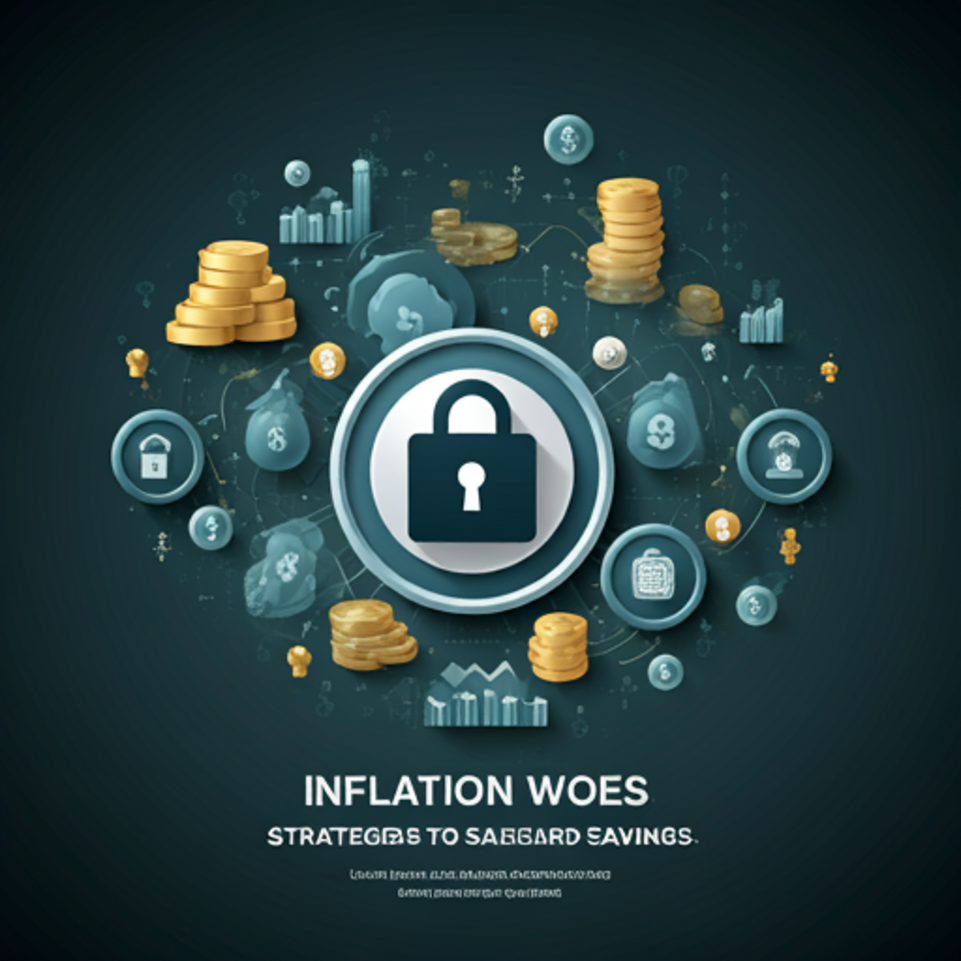Introduction to Inflation and Its Impact on Savings
Understanding Inflation: Causes and Effects
Inflation represents the rate at which the general level of prices for goods and services rises, eroding purchasing power. Consequently, as inflation increases, the real value of savings diminishes. This phenomenon compels individuals to seek alternative investment strategies. Understanding these dynamics is crucial for effective financial planning. Inflation can significantly impact long-term savings goals. It is indispensable to stay informed about economic trends.
The Historical Context of Inflation and Savings
Historically, inflation has fluctuated significantly, impacting savings across generations. During periods of high inflation, the purchasing power of saved money declines. This trend necessitates a reevaluation of traditional savings methods. Individuals must adapt their strategies to preserve wealth. Understanding past inflationary periods can inform current financial decisions. Knowledge is power in finance.
The Role of Cryptocurrency in an Inflationary Environment
How Cryptocurrencies Can Hedge Against Inflation
Cryptocurrencies offer a decentralized alternative to traditional currencies, making them appealing during inflationary periods. Their limited supply can protect against devaluation. As fiat currencies lose value, cryptocurrencies may retain or increase their worth. This characteristic attracts investors seeking stability. Understanding this dynamic is essential for informed decision-making. Knowledge empowers financial choices.
Comparing Cryptocurrencies to Traditional Assets
Cryptocurrencies and traditional assets serve different purposes in a portfolio. While traditional assets like stocks and bonds are subject to market fluctuations, cryptocurrencies offer unique volatility. This volatility can present both risks and opportunities. Investors must assess their risk tolerance carefully. Diversification remains a key strategy. A balanced approach is essential for financial health.
Diversifying Your Investment Portfolio
The Importance of Asset Diversification
Asset diversification mitigates risk by spreading investments across various classes. This strategy reduces exposure to any single asset’s volatility. By incorporating different assets, investors can enhance potential returns. A well-diversified portfolio is more resilient. It is crucial for long-term financial stability. Knowledge is key in investment decisions.
Incorporating Cryptocurrencies into Your Portfolio
Incorporating cryptocurrencies into an investment portfolio can enhance diversification. Their unique characteristics provide potential for high returns. However, they also introduce significant volatility. Investors should carefully assess their risk tolerance. Allocating a small percentage to cryptocurrencies can balance traditional assets. This approach may improve overall portfolio performance. Knowledge of market trends is essential. Understanding risks leads to better investment choices.
Stablecoins: A Safe Haven in Volatile Markets
What Are Stablecoins and How Do They Work?
Stablecoins are cryptocurrencies designed to maintain a stable value, typically pegged to fiat currencies. This stability makes them attractive during market volatility. They provide a safe haven for investors seeking to preserve capital. By minimizing price fluctuations, stablecoins facilitate easier transactions. Understanding their mechanics is crucial for effective use. Knowledge empowers better financial decisions.
Using Stablecoins to Preserve Value
Using stablecoins allows investors to preserve value during market fluctuations. Their pegged nature minimizes the risk of depreciation. This feature makes them ideal for short-term holdings. Investors can easily convert stablecoins back to fiat currencies. Understanding their benefits is essential for effective asset management. Knowledge leads to informed financial choices.
Investing in Precious Metals as a Complementary Strategy
The Historical Value of Gold and Silver
Gold and silver have historically served as reliable stores of value, especially during economic uncertainty. Their intrinsic worth provides a hedge against inflation. Investors often turn to these precious metals to diversify their portfolios. This strategy can mitigate risks associated with market volatility. Understanding their historical significance is crucial for informed investing. Knowledge enhances financial decision-making.
Integrating Precious Metals with Cryptocurrency Investments
Integrating precious metals with cryptocurrency investments can enhance portfolio stability. This combination offers diversification benefits. Key advantages include:
Investors should consider allocating a portion to both. This strategy can balance risk and reward. Knowledge is essential for effective asset management.
Building a Resilient Financial Strategy
Setting Financial Goals in an Inflationary Climate
Setting financial goals in an inflationary climate requires careful planning. Investors should prioritize short-term and long-term objectives. Key considerations include:
Regularly reviewing and adjusting goals is essential. This ensures alignment with changing economic conditions. Knowledge is power in financial planning.
Regularly Reviewing and Adjusting Your Strategy
Regularly reviewing and adjusting a financial strategy is crucial for long-term success. Market conditions and personal circumstances can change rapidly. This necessitates a proactive approach to investment management. He should assess performance metrics consistently. Identifying underperforming assets allows for timely reallocations. Staying informed about economic trends is essential. Knowledge leads to better financial outcomes.
Conclusion: Taking Action Against Inflation
Summarizing Key Strategies for Safeguarding Savings
To safeguard savings, individuals should adopt a multifaceted approach. This includes diversifying investments across various asset classes. Additionally, incorporating inflation-hedging assets is essential. He must regularly review his financial strategy. Staying informed about market trends enhances decision-making. Knowledge is vital for financial security.
Encouraging Proactive Financial Management
Proactive financial management is essential in today’s economic climate. Individuals should regularly assess their financial goals. Key actions include:
He must take charge of his finances. Knowledge empowers better decisions. Financial health is a continuous process.
